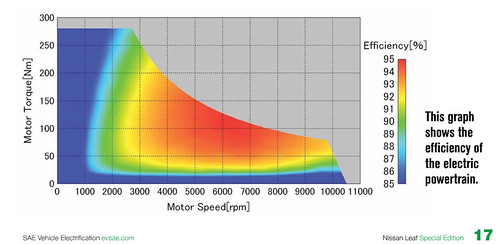I would make an educated guess that the Leaf's electric motor is around 95% efficient between 1/4 to 3/4 power. At full power it probably drops to about 80% efficiency. Of course, this is just a guess, but you have to start somewhere. Now consider that if you accelerate faster, you can travel at a slightly lower top speed and still reach your destination at the same time. So you save a slight amount of energy by not going quite as fast. I think after doing a boatload of complicated math, you will find that it makes hardly any difference what rate you accelerate. In fact, if you accelerate too slowly I think you'd use slightly more energy because you'd either be on the road a bit longer or have to go a bit faster to make up for it. This is an electric car, there is no engine, it's a whole different world.

To conserve energy, don't look at acceleration rate, look at reducing your speed. But as for me, if I have plenty of range I like to enjoy it.






